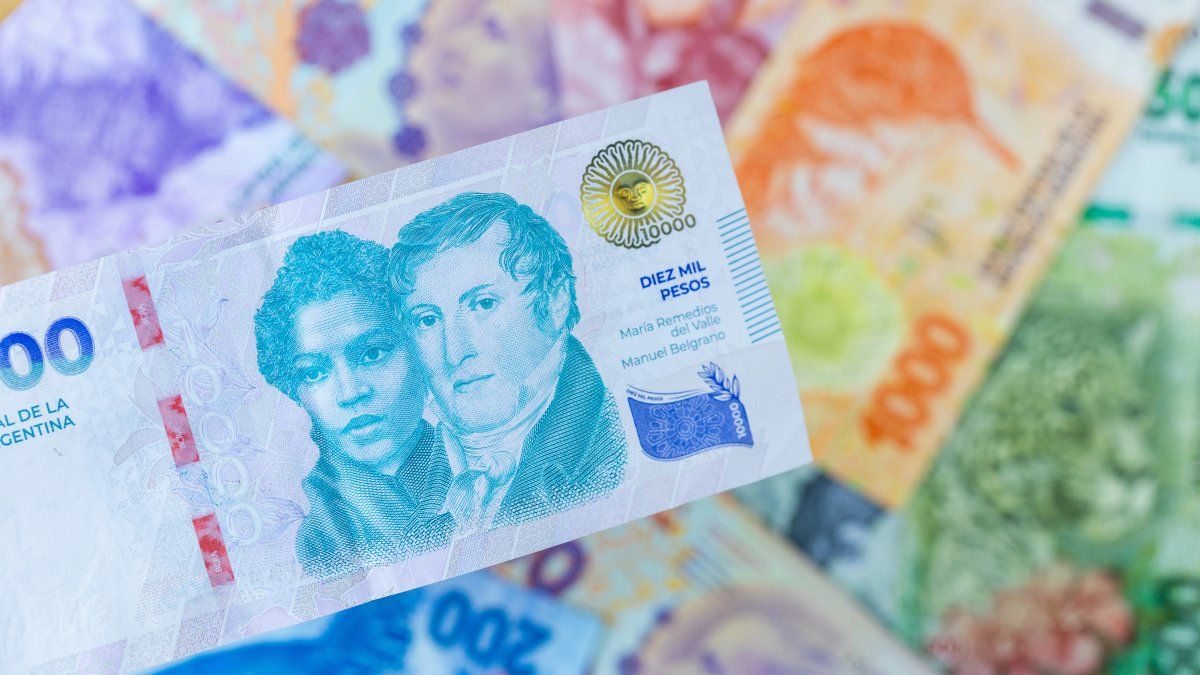Instruments in pesos Adjusted X Inflation (AXI) are the big winners in a scenario where the dollar It rises 2.2% monthly, and the bill is still.
The implicit rate of future dollar It stands at 44.7% annually, the longest position is April 2025 and is listed at $1,330, which reflects a rate of 51.9% annually.
The implicit rate curve future dollar reflects the government’s idea of maintaining the devaluation monthly at 2.2% annually. If the government were to strictly maintain this position, the dollar in April 2025 should be worth $1,138.4, which is consistent with a future position that contains a higher interest rate that is quoted at $1,330.
From our projections the inflation As of April 2024, it would be 64.7% annually, given that prices are more inflexible downwards in an environment of tariff prices that are clearly recovering. There is a black swan that can appear and change the scenario, such as a rise in the price of oil and gas internationally. Let’s not rule it out.
image.png
With inflation at 64.7% annually, and a devaluation rate of the wholesale dollar at 29.8% annually (arises from devaluing every month at a rate of 2.2%), the rate of inflation in Dollars It would be 26.8% annually. In this scenario, bonds in pesos that adjust for inflation would beat sovereign bonds in dollars, since, for example, the AL30 has an internal rate of return of 21.7% annually.
The inflation one year would be higher than the interest rate offered by banks for a traditional 30-day fixed term, this rate is around 40% per year depending on the entity and the amount to be placed. Clearly the UVA fixed terms They are going to beat traditional fixed terms.
We believe that as the months go by the Government will continue to arbitrate the monetary policy rate downwards, and this will bring with it lower returns on traditional fixed-term deposits, with which the reign of inflation-adjusted instruments continues to prevail in the market.
A few days ago some media predicted that bonds in pesos adjusted for inflation would cease to be attractive due to the possibility of a sharp drop in the price index, but it must be taken into account that the drop in the inflation rate must be measured with the devaluation rate of the wholesale dollar to reach any conclusion.
Yes to April the year 2025 the CCL dollar is trading at a price similar to the wholesale dollar, the rise of the CCL dollar in the next 12 months it would be approximately 6.4%, this would result in inflation in the dollar CCL of 54.8%with which bonds in inflation-adjusted pesos would be unbeatable in said scenario.
Currently, the TX26 bond, which is denominated in pesos and adjusts for inflation, has a technical value of $1,532.2 and its market value is $1,727, which means it is trading at a parity of 112.7% and a rate internal negative return of 5.2% annually, we can ignore this rate if we can earn very high levels of rates in dollars if the government anchors the exchange rate and appreciates the currency. There are other bonds that could be more attractive, such as the TX28, which is denominated in pesos and adjusts for inflation. Its technical value is $1,531.82 and its market price is $1,709, which means it has a parity of 111.6%. , and has a negative internal rate of return of 2.2% per year. Another bond that would gain a lot in dollar terms if the exchange rate is anchored and the peso appreciates.
Conclusion
. – The exchange rate policy leads us to an appreciation of the peso, which ends up favoring instruments in pesos that adjust for inflation in the market.
. – The scarce issuance of currency, the feeling that there are no pesos, plays against a policy of accumulation of reserves, the government wants individuals to take dollars out of the mattress and make transactions in the market in dollars. It is difficult for this to happen, and we could enter a recession with very harsh characteristics.
. – While the economy is defined between a hard or very hard recession, inflation will continue to be at higher levels than dollar bills and the wholesale dollar, so everything that adjusts for inflation will be a good deal.
. – In this scenario, be careful with credits that adjust for inflation, they look attractive, but they are a double-edged sword. With a recession you could lose your job, have a drop in the purchasing power of your salary, and the price of the goods you buy (for example, a car) could go down if you need liquidity. It does not seem appropriate to take debt adjusted for inflation.
. – Once again we maintain that in the current context the dollar is no longer an object of desire. The currency that will most defend your savings is the peso adjusted for inflation, at least in the situation we are experiencing, and with a scenario of fiscal and commercial surplus, non-issuance and low country risk.
Source: Ambito
I am a 24-year-old writer and journalist who has been working in the news industry for the past two years. I write primarily about market news, so if you’re looking for insights into what’s going on in the stock market or economic indicators, you’ve come to the right place. I also dabble in writing articles on lifestyle trends and pop culture news.




